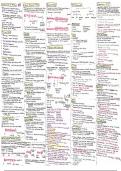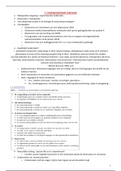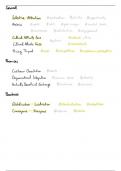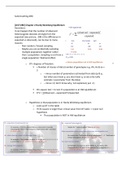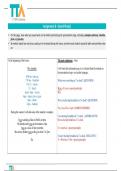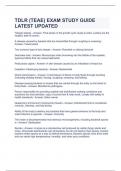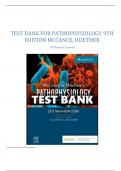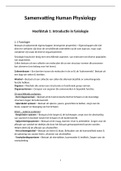Whoso List To Hunt, I Know where is an Hind - 1530s
CONTEXT: A man who is defeated by the chase of love - Wyatt was a renaissance man. Renaissance - rebirth of looking back at the classics (the Greeks) and reviving their ideas.
Italy places a huge role in guiding Britain. A renaissance man was a man who was good at certain things: a good soldier - the most marshal, but also a musician, a philosopher,
an artist, a hunter, well dressed, poet. Wyatt was the most sought out man in England at the time - in Henry Tudors court. He was a politician, worked for the government, had
a succession of romances, influenced by the notion of courtly love. Love poetry in this era was typically about courtly and unrequited love- Courtly love put women on
pedestals and glorified amorous passion in a way that was anathema both to Classical civilization and Christian salvation.
STRUCTURE SOUND | SOUND EFFECTS | IMAGERY
VOICE
In ‘Whoso List to Hunt’, the iambic pentameter reinforces the idea The speaker’s feelings are also suggested by Wyatt’s metaphor of the ‘deer’ presents the allure of love
that Wyatt finds the allure of love in the ‘chase’ with the meter aural effects. As the octave progresses, ‘f’ as something embedded in men through their primal
being solemn and rhythmic mimicking the men partaking in the sounds accumulate to different effects: first, instincts to hunt down a hind. Wyatt may have chosen
‘hunt’: ‘But as for me, alas, I may no more’. The first octave’s in combination with short vowel sounds the ‘deer’ as the target for the hunt as, in Greek
repetitive rhyme scheme reflects the speaker's obsession with the they suggest the quick bounds of the deer mythology, it is a symbol of innocence and purity; this
‘deer’ - as seen through the rhyming couplet ‘more’ and ‘sore’. ‘as she fleeth afore’; secondly, they would most likely make her a more enticing (and
Wyatt’s use of assonance in ‘vayne travaill’ highlights his emphasise the fruitlessness of pursuit: conventional) target for men in the 16th century – an
desperation to achieve this ‘unobtainable’ woman whilst ‘Faynting I followe. I leve of, therefore’. idea which feminist readers would disagree with. For
simultaneously diminishing Wyatt’s status as the ‘ideal renaissance Note how this line disrupts the light iambic Wyatt, the allure of love is linked to a woman’s
man’ as he is defeated by the chase of love. Further, the fricatives meter with a trochee at the beginning of unattainability as these men are essentially hunting for a
and alliteration in ‘as she fleeth afore / Fainting I follow’ creates the the line – ‘FAYNTing’ – which uses a trophy wife. The ‘diamonds’ around ‘her fair neck’
familiar whipping sound of fast movement which emphasises the faltering beat thereafter, underscoring the emphasise this as the deer belongs to the king: she is
anxiety and distress of the speaker as he is consumed by the chase: speaker’s faltering, then abandoned, trapped by love. Here, in the sestet, the poem becomes a
not only is Wyatt’s ‘desired woman’ on the line, but also his status attempt to follow his desire. The octave ‘cri de coeur’ poem as it parallels Wyatt’s own experience
and reputation. concludes with a metaphor of futility: ‘in a of love for Anne Boleyn – wife of Henry VIII.
Departs from Petrarch in his exploration and structuring of the nett I seke to hold the wynde’. The hunter is Wyatt’s methods change subtly too as, after line ten,
poem’s subject matter. In a Petrarchan sonnet, the octave ill-equipped for his task, his actions are instead of revealing the feelings of the speaker, he offers
commonly presents a situation or problem, which the sestet foolish and his quarry so elusive as to be the reader imagery associated with the deer. We move
responds to or solves. In Wyatt’s sonnet, the normal structure is both intangible and invisible. from the wide angles of the octave – which included
reversed: the consequences of a situation (an unattainable love) are glimpses of the fleeing deer – to focus on her more
presented (in the octave) first, then the sestet describes the Tone: sense of desperation, to not be directly, moving close enough to see her neck and then
situation that led to those consequences. humiliated – desire rather than love. the writing on her collar.
TYPICALITY: Courtly love, began in Provence in the 12th century, and spread through the courts of Northern France, Italy and Germany. An aristocratic pastime with its special
rituals and routines. In many ways, courtly love is remarkably like modern notions of romantic love. The lover falls passionately in love at first sight with the beloved. He suffers
the pangs of love, wishing to be worthy of the beloved. He may have to overcome obstacles to gain her love. Often the love affair, if adulterous, has to be kept secret. But there
are important differences, so it is instructive to consider the sources and literature of courtly love, before examining the radical way in which Chaucer revolutionised the
concept, parodying it through fabliaux and exposing its more disturbing elements. Courtly love presents the process of falling in love formally. The first feature is love at first
sight (stimulus to love is always from an external source). The lover is a passive recipient of an external stimulus, usually visual. The lover beholds someone whom he then
proceeds to desire greatly. Another feature of courtly love is love as a sickness: the lover will suffer both physically and mentally. Love is its own sickness and its own remedy.
Famous romance of Tristan and Isolde tells of love, sexual passion and consuming death. Their love is inflamed through drinking a love potion on board a ship.
CONTEXT: A man who is defeated by the chase of love - Wyatt was a renaissance man. Renaissance - rebirth of looking back at the classics (the Greeks) and reviving their ideas.
Italy places a huge role in guiding Britain. A renaissance man was a man who was good at certain things: a good soldier - the most marshal, but also a musician, a philosopher,
an artist, a hunter, well dressed, poet. Wyatt was the most sought out man in England at the time - in Henry Tudors court. He was a politician, worked for the government, had
a succession of romances, influenced by the notion of courtly love. Love poetry in this era was typically about courtly and unrequited love- Courtly love put women on
pedestals and glorified amorous passion in a way that was anathema both to Classical civilization and Christian salvation.
STRUCTURE SOUND | SOUND EFFECTS | IMAGERY
VOICE
In ‘Whoso List to Hunt’, the iambic pentameter reinforces the idea The speaker’s feelings are also suggested by Wyatt’s metaphor of the ‘deer’ presents the allure of love
that Wyatt finds the allure of love in the ‘chase’ with the meter aural effects. As the octave progresses, ‘f’ as something embedded in men through their primal
being solemn and rhythmic mimicking the men partaking in the sounds accumulate to different effects: first, instincts to hunt down a hind. Wyatt may have chosen
‘hunt’: ‘But as for me, alas, I may no more’. The first octave’s in combination with short vowel sounds the ‘deer’ as the target for the hunt as, in Greek
repetitive rhyme scheme reflects the speaker's obsession with the they suggest the quick bounds of the deer mythology, it is a symbol of innocence and purity; this
‘deer’ - as seen through the rhyming couplet ‘more’ and ‘sore’. ‘as she fleeth afore’; secondly, they would most likely make her a more enticing (and
Wyatt’s use of assonance in ‘vayne travaill’ highlights his emphasise the fruitlessness of pursuit: conventional) target for men in the 16th century – an
desperation to achieve this ‘unobtainable’ woman whilst ‘Faynting I followe. I leve of, therefore’. idea which feminist readers would disagree with. For
simultaneously diminishing Wyatt’s status as the ‘ideal renaissance Note how this line disrupts the light iambic Wyatt, the allure of love is linked to a woman’s
man’ as he is defeated by the chase of love. Further, the fricatives meter with a trochee at the beginning of unattainability as these men are essentially hunting for a
and alliteration in ‘as she fleeth afore / Fainting I follow’ creates the the line – ‘FAYNTing’ – which uses a trophy wife. The ‘diamonds’ around ‘her fair neck’
familiar whipping sound of fast movement which emphasises the faltering beat thereafter, underscoring the emphasise this as the deer belongs to the king: she is
anxiety and distress of the speaker as he is consumed by the chase: speaker’s faltering, then abandoned, trapped by love. Here, in the sestet, the poem becomes a
not only is Wyatt’s ‘desired woman’ on the line, but also his status attempt to follow his desire. The octave ‘cri de coeur’ poem as it parallels Wyatt’s own experience
and reputation. concludes with a metaphor of futility: ‘in a of love for Anne Boleyn – wife of Henry VIII.
Departs from Petrarch in his exploration and structuring of the nett I seke to hold the wynde’. The hunter is Wyatt’s methods change subtly too as, after line ten,
poem’s subject matter. In a Petrarchan sonnet, the octave ill-equipped for his task, his actions are instead of revealing the feelings of the speaker, he offers
commonly presents a situation or problem, which the sestet foolish and his quarry so elusive as to be the reader imagery associated with the deer. We move
responds to or solves. In Wyatt’s sonnet, the normal structure is both intangible and invisible. from the wide angles of the octave – which included
reversed: the consequences of a situation (an unattainable love) are glimpses of the fleeing deer – to focus on her more
presented (in the octave) first, then the sestet describes the Tone: sense of desperation, to not be directly, moving close enough to see her neck and then
situation that led to those consequences. humiliated – desire rather than love. the writing on her collar.
TYPICALITY: Courtly love, began in Provence in the 12th century, and spread through the courts of Northern France, Italy and Germany. An aristocratic pastime with its special
rituals and routines. In many ways, courtly love is remarkably like modern notions of romantic love. The lover falls passionately in love at first sight with the beloved. He suffers
the pangs of love, wishing to be worthy of the beloved. He may have to overcome obstacles to gain her love. Often the love affair, if adulterous, has to be kept secret. But there
are important differences, so it is instructive to consider the sources and literature of courtly love, before examining the radical way in which Chaucer revolutionised the
concept, parodying it through fabliaux and exposing its more disturbing elements. Courtly love presents the process of falling in love formally. The first feature is love at first
sight (stimulus to love is always from an external source). The lover is a passive recipient of an external stimulus, usually visual. The lover beholds someone whom he then
proceeds to desire greatly. Another feature of courtly love is love as a sickness: the lover will suffer both physically and mentally. Love is its own sickness and its own remedy.
Famous romance of Tristan and Isolde tells of love, sexual passion and consuming death. Their love is inflamed through drinking a love potion on board a ship.

